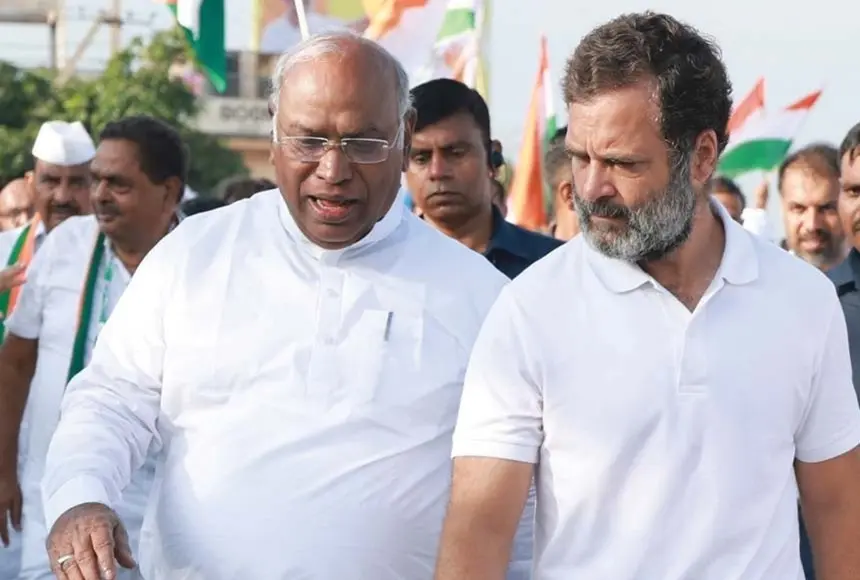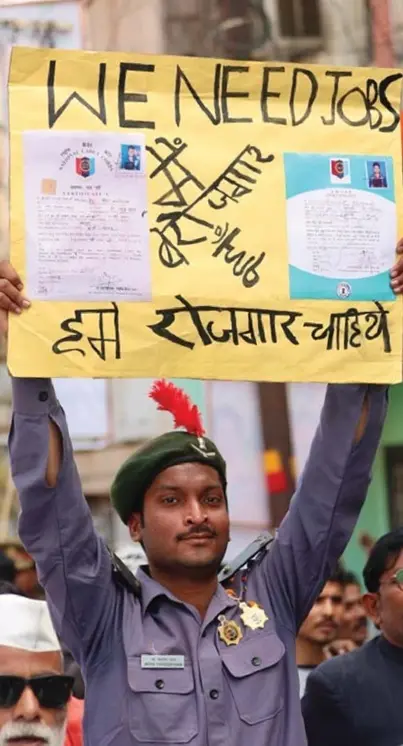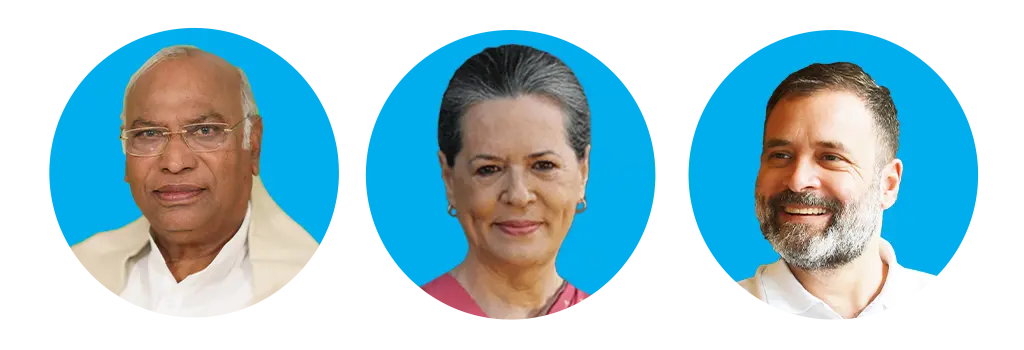Introduction
At every stage of its 138-year journey, the Indian National Congress had identified itself with the problems, development, aspirations and hopes of all the people of India. During the freedom struggle, its foremost aim was to win freedom. It was guided by the wisdom and sacrifice of great leaders like Mahatma Gandhi. After independence, the Congress’ article of faith was the Constitution of India of which Dr Babasaheb Ambedkar was the prime architect.
We reiterate that the Constitution of India shall remain our sole guide and companion in our never-ending journey.

Since 1947, the Congress has been India’s beacon of hope. Our policies brought about rapid industrialisation in a predominantly agrarian economy, transformed India from a famine-struck country to one that exports food grains to countries around the world, laid the scientific and technical foundations for India’s rise as a global software powerhouse, and built world class institutions in research and higher education whose graduates are seen as at par with the world’s best. Even as liberalisation and reforms caused economic growth to boom under successive Congress governments, our social welfare policies ensured that every citizen was able to participate in the India story. The social welfare net created by the United Progressive Alliance (UPA) such as the Mahatma Gandhi National Rural Employment Guarantee Act (MGNREGA) and the National Food Security Act ensured that India was able to absorb the shocks of the Global Financial Crisis (2008), the Taper Tantrum (2013), demonetisation (2016) and COVID-19 (2020).
Five years ago, on the eve of the Lok Sabha polls, the Congress had published a 54-page manifesto. Based on the record of the first term of the Modi government, we had forewarned the people of the precarious state of our polity and economy, and of the danger of re-electing the BJP/NDA government. Our assessment of the situation in the country has, alas, proved true. Many of the weaknesses and woes have deepened in the last five years. The promises and assurances that the Congress gave in its 2019 manifesto remain valid and doubly relevant today. Hence, we will start with endorsing our 2019 manifesto and urge you to read the statements here as part of this manifesto.
We may recall our forewarning
- We had said, “Youth have lost jobs”. The unemployment rate is 8 percent; among graduates the unemployment rate is over 40%.
- We had said, “Farmers have lost hope”. Farmers had to come on to the streets for 16 months to fight the three farm laws that would have made them tenant-farmers of corporate houses; and the farmers are back on the streets again.
- We had said, “Traders have lost business”. The Goods and Services Tax (GST) laws have squeezed exorbitant tax revenues out of lakhs of traders and constrained free trade.
- We had said, “Micro, small and medium enterprises have lost their confidence”. Lakhs of MSMEs have shut down and are no longer creators of jobs
- We had said, “Women have lost a sense of security”. Crimes against women have increased by 31 percent between 2014 and 2022.
- We had said “Deprived communities have lost their economic rights”. Scheduled Castes (SC), Scheduled Tribes (ST) and Other Backward Classes (OBC) communities have been deprived of jobs because of the unfilled vacancies in government and other public institutions. Tribal people have been denied their rights under the Forest Rights Act.
- We had said, “Institutions have lost independence”. Every institution, including Constitutional bodies, has been undermined and, in some cases, forced to become subservient to the government.

Our greatest concern was the prevailing ‘climate of fear, intimidation and hatred’. In the last five years, every section of the people has lived in fear; laws and investigating agencies have been weaponised to intimidate people; and through its words and actions the BJP and its affiliates have spread hatred among people belonging to different religious, language and caste groups.
Today, the dangers that we had warned against have become a hard reality.
The economy is in a crisis. Despite the claim that India is the fastest growing large economy in the world, our growth rate has fallen from an average of 6.7 percent (new series) during the UPA period of 2004-14 to an average of 5.9 percent during 2014-24. As against the goal of doubling the economy (which the UPA did achieve), India’s GDP in real terms will rise from ₹ 100 lakh crore in 2013-14 to only ₹ 173 lakh crore in 2023-24, far short of the target.
The decline in the growth rate has serious consequences for the people, especially for those who belong to the poor and middle classes. The impact has fallen on per capita income, consumption of goods and services, and standard of living. Household net assets have declined, household liabilities have increased and families have borrowed more.
Inequality between the rich on the one hand and the poor and middle classes on the other have increased sharply dealing a body blow to the goals of equality, equity, and social and economic justice. A report titled “Income and Wealth Inequality in India, 1922-2023: The Rise of the Billionaire Raj” by leading global economists, including Thomas Piketty, shows that India under Prime Minister Narendra Modi is more unequal than even under the British Raj. The share of national income earned by India’s top 1 percent is today at its highest historical levels and is among the highest globally. The rise of inequality has been particularly pronounced between 2014 and 2023.
The numbers of registered and active workers under MGNREGA and the fact that 80 crore people depend on free grain (5 kg per person per month) are definite indicators of widespread poverty. On the Global Hunger Index, India’s rank is 111 out of 125 countries.
The gravest danger is that India may no longer be a truly free and democratic republic. Democracy in India has been hollowed out and we are rapidly sliding to become a one-party and one-person dictatorship. The federal structure is under attack with the central government appropriating most of the central revenues, passing laws on subjects that were hitherto left to the state governments, and using its financial and executive powers to reduce states to municipalities. Governors of non-BJP-governed states are encouraged to paralyse the working of elected governments. Laws and investigating agencies are used to foist false cases against non-BJP leaders to force them to submit to the BJP’s will. The media has been rewarded or intimidated to become a vehicle of propaganda of the government.
Ask yourself two questions:
- Is your life better today than what it was in 2014?
- Is your mind without fear as dreamed by Rabindranath Tagore?
The choice is not Congress or BJP, but it is more than that. The choice is
- Democratic government or Authoritarian rule
- Freedom or Fear
- Prosperity for All or Wealth for a Few
- Justice or Injustice.
The 2024 general election presents an opportunity for radically changing the style and substance of governance that has been in evidence in the past decade of Anyay Kaal. We appeal to you to look beyond religion, language and caste, choose wisely, and install a democratic government that will work for all the people of India. We appeal to you to vote for the INDIAN NATIONAL CONGRESS.

